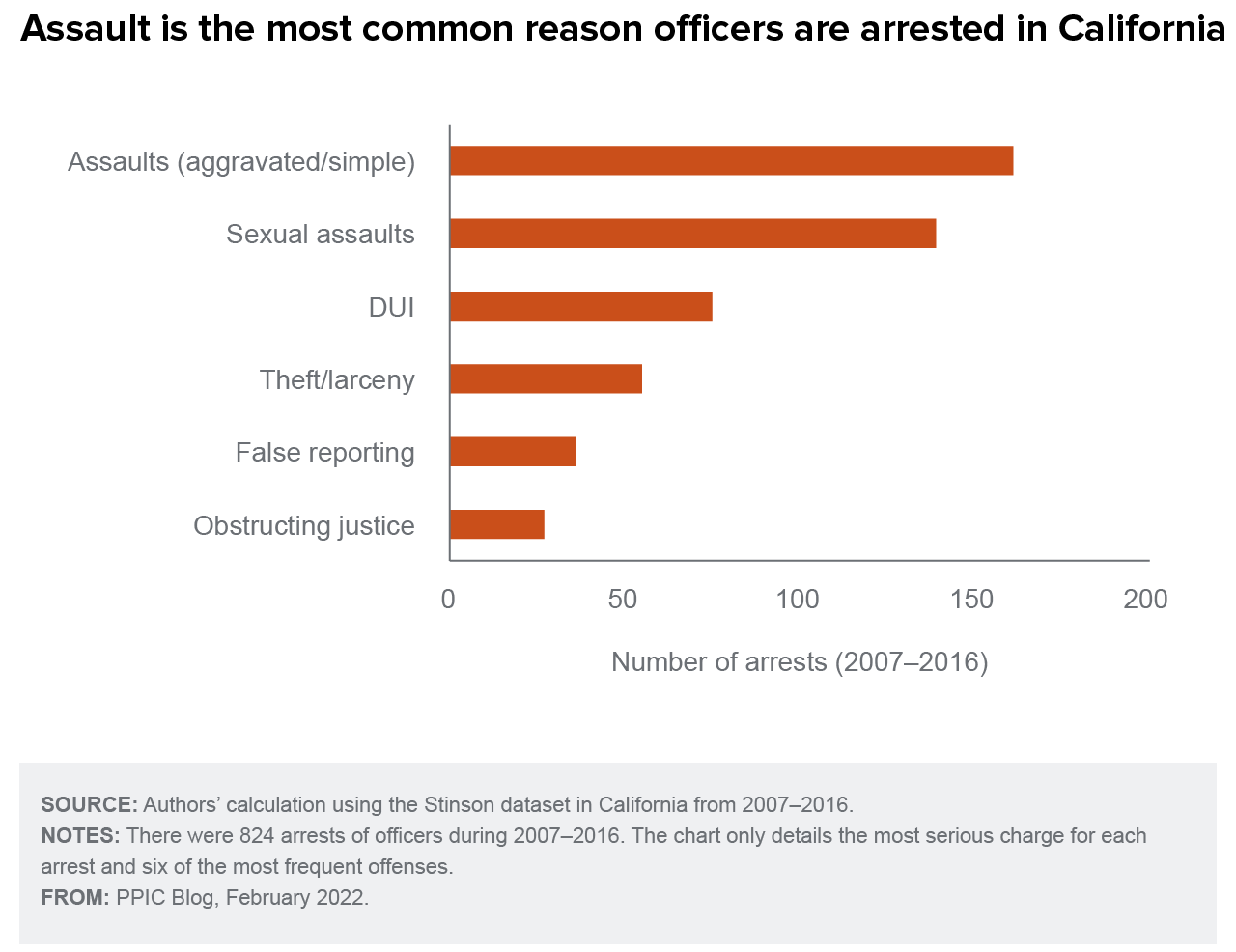This year, California joined 47 other states in creating a decertification process for law enforcement officers who commit serious misconduct—barring them from serving in any of the state’s law enforcement agencies. Following the murder of George Floyd, states across the country implemented a raft of reforms to increase officer accountability. One of the key goals of California’s law (SB 2) is to prevent “wandering officers”—those who commit misconduct and then move to another agency. The bill also includes several measures to improve transparency, which could lead to a better understanding of the frequency and nature of police misconduct in California.
SB 2 requires a seismic shift for law enforcement agencies and the state’s Peace Officer Standards and Training (POST) commission, the licensing agency for police officers. POST has been tasked with reviewing, and if necessary, conducting its own misconduct investigations, in addition to implementing the decertification process. A civilian-led accountability board will publicly review investigation findings and make recommendations. POST commissioners, who largely consist of current or former members of law enforcement, will then vote on the final outcome.
The law also compels the California Department of Justice (DOJ) to provide all disqualifying felony and misdemeanor convictions of police officers to POST. Examples of disqualifying misconduct offenses include dishonesty, abuse of power, failure to cooperate with a misconduct investigation, and failure to intervene when observing excessive force of another officer.
These are significant changes from the status quo. Prior to SB 2, a felony conviction should have disqualified an officer from serving in law enforcement, but POST had limited knowledge about the scope of police misconduct because it largely relied on voluntary and inconsistent reports from agencies. SB 2 now compels agencies to notify POST of any separation of an officer within ten days and to provide misconduct records.
SB 2 should also improve the accessibility of data on police misconduct—an area that is notoriously difficult to study because existing data sources are limited. In our recent report, we examined one of the few resources on misconduct, crowdsourced arrest data for law enforcement officers. We found about 80 California law enforcement officers are arrested each year, out of more than 78,000 officers, for an arrest rate of 103 arrests per 100,000 law enforcement officers. For context, California’s arrest rate in 2019 for the population as a whole was 2,642 arrests per 100,000 residents. Most arrests of law enforcement officers resulted in convictions (76%), a majority of which were felony convictions (62%). The arrests were most often for aggravated and simple assaults, followed by sexual assaults and DUIs.

But these arrest data, which are from a national database, likely undercount instances of misconduct for two reasons: (1) they are crowdsourced using search engine tools and may not capture all arrests, and (2) they do not reflect all misconduct cases, such as those documented in personnel records, lawsuit settlements, and the like.
The transparency initiatives in SB 2—which make decertification records public—could allow researchers to more accurately identify the frequency of different kinds of misconduct, differences across agencies and regions, and racial disparities in victimization. For example, a national database created in 2019 by USA Today of over 30,000 decertified officers from 44 states, not including California, showed that while fewer than 10% of officers in most agencies were investigated for misconduct, a notable portion of those officers were repeatedly investigated.
SB 2 provides important tools to address police misconduct and improve transparency, but the success of these reforms depends on compliance and accurate reporting from local law enforcement agencies. Initially, personnel or technology constraints may pose a challenge, as they did when the state began collecting use-of-force information and not all agencies reported data. For SB 2, agencies may need to develop new processes to report officer separations within the mandated ten days.
In the long run, creating a public, de-identified database on police misconduct would help researchers and the public make the most of the newly available data. As the state begins to collect and share better information, evaluating the effects of this legislation on police misconduct and public safety will be critical.






